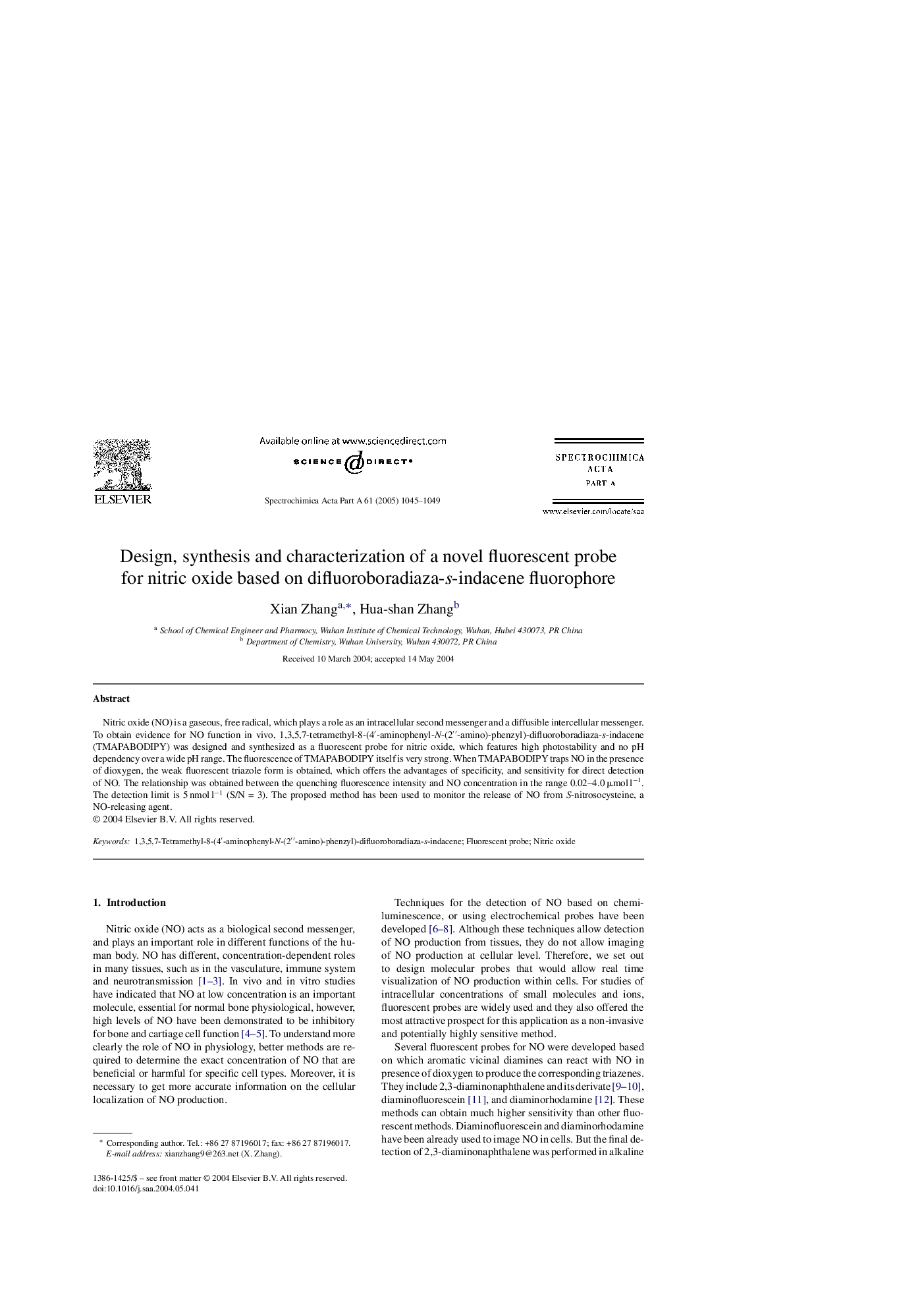| Article ID | Journal | Published Year | Pages | File Type |
|---|---|---|---|---|
| 10557389 | Spectrochimica Acta Part A: Molecular and Biomolecular Spectroscopy | 2005 | 5 Pages |
Abstract
Nitric oxide (NO) is a gaseous, free radical, which plays a role as an intracellular second messenger and a diffusible intercellular messenger. To obtain evidence for NO function in vivo, 1,3,5,7-tetramethyl-8-(4â²-aminophenyl-N-(2â²â²-amino)-phenzyl)-difluoroboradiaza-s-indacene (TMAPABODIPY) was designed and synthesized as a fluorescent probe for nitric oxide, which features high photostability and no pH dependency over a wide pH range. The fluorescence of TMAPABODIPY itself is very strong. When TMAPABODIPY traps NO in the presence of dioxygen, the weak fluorescent triazole form is obtained, which offers the advantages of specificity, and sensitivity for direct detection of NO. The relationship was obtained between the quenching fluorescence intensity and NO concentration in the range 0.02-4.0 μmol lâ1. The detection limit is 5 nmol lâ1 (S/N = 3). The proposed method has been used to monitor the release of NO from S-nitrosocysteine, a NO-releasing agent.
Keywords
Related Topics
Physical Sciences and Engineering
Chemistry
Analytical Chemistry
Authors
Xian Zhang, Hua-shan Zhang,
